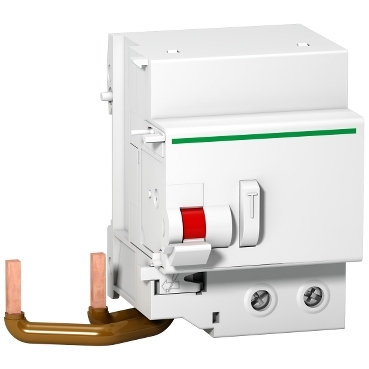Features
- Providing additional protection against fire and fully compliant with national standards, the residual current add-on device is ideal if you are working with sensitive circuits.
- Easily connect to Acti 9 NG125 circuit breakers either electronically or manually.
- 30 mA sensitivity for additional protection against direct contact (in compliance with IEC 60364).
- 100 mA, 300 mA, 500 mA, 1000 mA, and 3000 mA sensitivities for additional protection against fire and indirect contact (in compliance with IEC 60364).
- “SI” (Super Immune) type: protects sensitive circuits (IT equipment) and those prone to disturbances (lighting ballasts, power electronics).
- Selective S or R types: trips the device that is closest to the fault current.
- Adjustable type: provides a choice of sensitivity and tripping time thanks to a switching mechanism.
- Complies with standards for the Acti 9 NG125 + Vigi NG125 module combination: IEC EN 61009 certified by national authorities, IEC 60947-2.
- Acti 9 NG125 circuit breakers retain the same characteristics when combined with a Vigi NG125 module.
Benefits
Designed specifically to work with Acti 9 NG125 circuit breakers, the residual current add-on device is not only easy to install, but provides you with much needed additional protection.
Simplicity
The simplicity of combining Vigi NG125 modules with Acti 9 NG125 circuit breakers makes them easy to install.
Security
“SI” (Super Immune) type Vigi NG125 modules are completely immune to disturbances.
Applications
Ideal for installation in all industrial and commercial buildings, residual current add-on devices provide protection against:
- electrocution (in compliance with IEC 60364 installation standards and national standards).
- fire hazards caused by leakage currents flowing into building materials.


